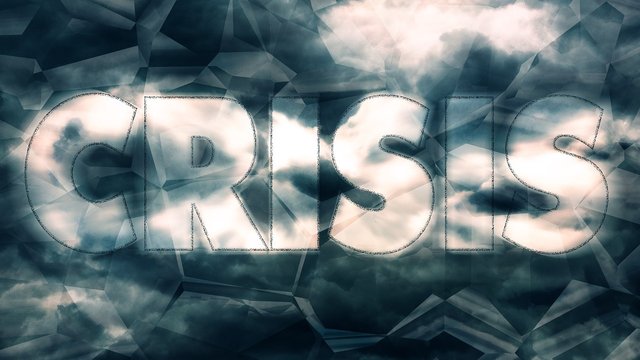24. Crisis Management Crash Course - Business Bits - 30 Days Challenge
Especially in the early days of a startup, things tend to unfold in a very hectic way. Predictability is close to zero and you hardly know what you’re going to work on next week. But that's something normal in a startup. Some people - me included - even hunt this adrenaline rush. It’s like learning to surf and then enjoying the feeling. Staying on top of the wave makes it up for all the chaos and unexpected turns.
And that’s the optimistic scenario.
The pessimistic scenario includes also crisis.
What Is A Crisis?
Well, a crisis can be defined in many ways, but for the sake of this posts series on entrepreneurship, we’ll try to limit our definition to this: a crisis is a major disruption in the day to day processes of your business, to the point of (or beyond the point of) complete stale. In other words, crisis is such a big wave that it puts you down, surf board included. And not only that, but it may also bring other surprises, like, for instance, sharks. One moment you’re on top of the world, the next you’re under water, fighting for your survival.
Crisis has this nasty habit of not announcing itself. Most of the time it comes uninvited. And that “out of the blue” effect leverages the bad stuff with many orders of magnitude. It’s not only the bad consequences that it bears, but also the fact that they pop up the moment you’re the least prepared.
I’ve been fortunate enough to experience many crisis. The term “fortunate” is based on how I see things now, of course, because during the crisis I had a very different mood :). But experience is the best teacher and even if you get some bruises every now and then, in the end, your game will be much better.
What follows is a very short writeup of my crisis management setup, or, in better words, my crisis management cycle. Take from it whatever works for you.
1. Don’t take it personally

Unless you stole all the company money, ran away in a tropical paradise without a word and disappointed all your colleagues and customers, it’s never about you. If you did some or all of the above, well, the crisis is about you. You’re a bad unicorn.
But if not, there’s no link whatsoever. Really. Things just happen, sometimes. Don’t give in to guilt, to “shit, I should’ve seen that” and so on.
A common mistake among young entrepreneurs is to link their self-esteem to the size or well being of their startup. These are different entities and they should remain like that, if you want to manage both properly. Because if the company takes a hit, you tend to feel it like you took a hit. And that will severely affect your ability to act about it.
Take a step back, see what you can do and start working on it.
2. Stop the hemorrhage

That’s the second most important step after you realize it’s not about you. Whatever misfortune you had, the first thing that you should do is to stop the biggest and most expensive consequence. Or, how I call it, “the hemorrhage”.
Let’s say the last version of your app has a bug in it that makes it unusable (I’ve been there once, and it was a complete nightmare). The first and the most important thing is to solve the bug, no matter what. Sleep is not an option here. Once the bug has been fixed, you can start thinking at a communication strategy, even if the app wasn’t yet updated.
Some people tend to prioritize backward: first, we communicate, then we see if we can solve it. I do it the other way around: first, stop the hemorrhage, then tell them I solved it.
If the crisis is longer, for instance, if your site has been under a DDOS attack, just acknowledging the situation and letting them know you’re working on it may be enough for a while. But communication without taking any step forward is even worse than the crisis itself.
3. Find the root cause

Not the apparent cause, mind you. Things happen for a reason and your job as an entrepreneur is to find the real reasons behind this crisis.
There is a concept borrowed from the software industry, called “zero day vulnerability”. That basically means the crisis was something that you simply couldn’t see and you’ve just been hit. Political decisions, brutal weather events, etc. You know the drill: you just wake up one morning and the world is not what it used to be yesterday.
But “zero day vulnerability” situations are quite rare. Most of the time, a crisis is the result of a long and slow process of accumulation. Things that weren’t properly managed grew slowly until the bubble explodes.
Your job is to find what those things are, not necessarily where the crisis actually hit.
4. Business as usual

Once you stopped the hemorrhage, once you realized from where it comes, just get back to work. That’s it. Don’t put your vicim hat, nor brag about how cleverly you managed the whole thing.
Just get back to work.
Try to remember that we can’t control much in this life, no matter how much we learned, we know or we have. Crisis may come at any time. Just deal with it.
As Hemingway said “The world breaks everyone and afterward many are strong in the broken places”
sources: image 1, image 2, image 3, image 3, image 4.
This post is part of a 30 days challenge on business, you can find the entire list of articles here.
I'm a serial entrepreneur, blogger and ultrarunner. You can find me mainly on my blog at Dragos Roua where I write about productivity, business, relationships and running. Here on Steemit you may stay updated by following me @dragosroua.


Stop the bleeding! My thoughts on Steem these days lol. In fact, the whole list is applicable for anyone dabbling on Steemit!
Btw also wanna point out a typo in the title :)
To be honest, after Steem price fell under 0.16, the June pre-bubble level, I kinda felt the need to write this post :). Thanks for the heads up about the typo, corrected.